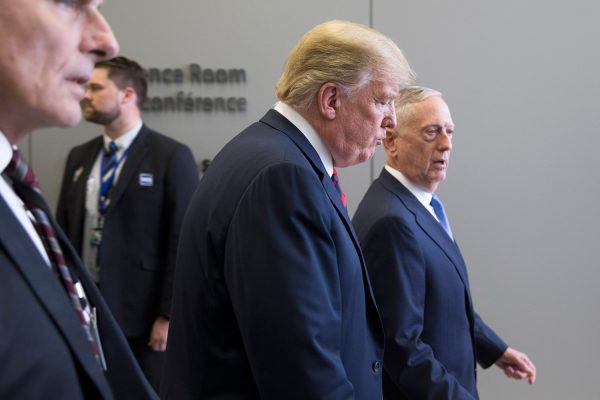
American president Donald Trump has called on NATO to get more involved in the Middle East.
Speaking a day after Iran retaliated for the assassination of its top general, Qasem Soleimani, in Iraq by attacking American military bases in the country, Trump pointed out that the United States are no longer dependent on Middle Eastern oil.
He didn’t elaborate, but I can think of at least four problems with the idea.
Problems
- Mandate: The name gives it away: under Article 6 of the North Atlantic Treaty, only attacks in Europe and North America warrant a collective response. An Iranian attack on American military bases in Iraq does not.
- Capacity: Even put together all of Europe’s armed forces are not equivalent to America’s and they have far less expeditionary capacity. The United States Navy has twelve aircraft carriers, at least one of which is always assigned to the Fifth Fleet in the Middle East. Britain, France, Italy and Spain have five operational aircraft carriers between them, with a sixth under construction in the UK. They’re all half the size of America’s supercarriers. Barack Obama wanted Britain and France to take the lead in Libya but soon found they could not sustain a prolonged military engagement without American support.
- Will: Europeans have no desire to take over America’s role as the policeman of the Middle East.
- America’s interests: Securing oil for itself was one reason America got involved in the Middle East. Securing the oil supply to post-World War II Europe was another. To this day, one of the reasons America is in the region is to prevent it from destabilizing Europe, for example, through refugee flows. A stable and prosperous Europe is in America’s economic and strategic interest. If Europe is unstable and America withdraws from the Middle East, it would leave the two regions vulnerable to pressures from China and Russia. America’s strategic priority for the last 75 years has been to prevent either or both from dominating Eurasia, which could put them in a position to threaten North America.
What then?
America has about 10,000 troops in the Middle East against 60,000 in Europe and 130,000 in Asia. That hardly seems disproportionate.
If Trump insists on pulling them out, the better alternative is not to draw NATO in but a Middle East that self-regulates; one in which its main powers — Egypt, Iran, Saudi Arabia, Turkey — are of more or less equal strength, divided enough to prevent permanent alliances or a three-against-one, but united enough to resist outside (Chinese or Russian) pressure.
This was Obama’s hope. Trump, incapable of recognizing any of his predecessor’s accomplishments:
- Needlessly withdrew from the 2015 nuclear deal, which could have been a first step toward Iran’s rehabilitation in the region;
- Threw his support unquestionably behind Saudi Arabia and the smaller Persian Gulf states, taking sides in the Arab-Iranian cold war when, as Greg Lawson argued here eight years ago, the United States should pivot on the Sunni-Shia divide;
- Allowed Turkey to crush the Kurds within its own borders and in Syria when they not only showed loyalty and sacrifice in leading the fight against the self-proclaimed Islamic State but are also a block on Turkey’s neo-Ottoman ambitions and a buffer between it and Iran; and
- Handed Syria to Vladimir Putin.
Now Trump wants Europe to come in and take over the mess he has made?
